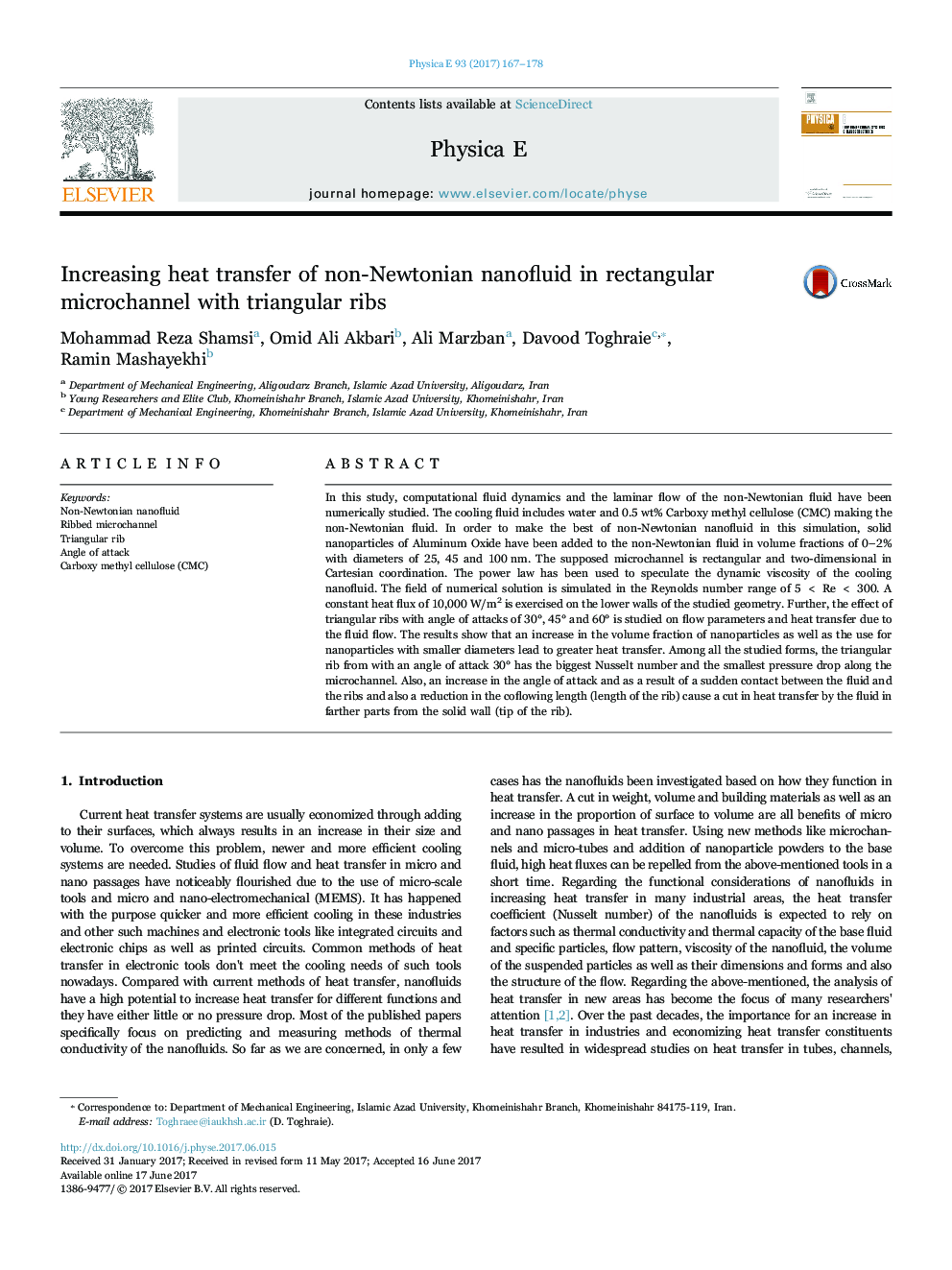| Article ID | Journal | Published Year | Pages | File Type |
|---|---|---|---|---|
| 5450011 | Physica E: Low-dimensional Systems and Nanostructures | 2017 | 12 Pages |
â¢Laminar flow of the non-Newtonian fluid have been numerically studied.â¢An increase in the volume fraction of nanoparticles as well as the use for nanoparticles with smaller diameters lead to greater heat transfer.â¢An increase in the angle of attack cause a cut in heat transfer by the fluid in farther parts from the solid wall (tip of the rib).
In this study, computational fluid dynamics and the laminar flow of the non-Newtonian fluid have been numerically studied. The cooling fluid includes water and 0.5 wt% Carboxy methyl cellulose (CMC) making the non-Newtonian fluid. In order to make the best of non-Newtonian nanofluid in this simulation, solid nanoparticles of Aluminum Oxide have been added to the non-Newtonian fluid in volume fractions of 0-2% with diameters of 25, 45 and 100 nm. The supposed microchannel is rectangular and two-dimensional in Cartesian coordination. The power law has been used to speculate the dynamic viscosity of the cooling nanofluid. The field of numerical solution is simulated in the Reynolds number range of 5 < Re < 300. A constant heat flux of 10,000 W/m2 is exercised on the lower walls of the studied geometry. Further, the effect of triangular ribs with angle of attacks of 30°, 45° and 60° is studied on flow parameters and heat transfer due to the fluid flow. The results show that an increase in the volume fraction of nanoparticles as well as the use for nanoparticles with smaller diameters lead to greater heat transfer. Among all the studied forms, the triangular rib from with an angle of attack 30° has the biggest Nusselt number and the smallest pressure drop along the microchannel. Also, an increase in the angle of attack and as a result of a sudden contact between the fluid and the ribs and also a reduction in the coflowing length (length of the rib) cause a cut in heat transfer by the fluid in farther parts from the solid wall (tip of the rib).
